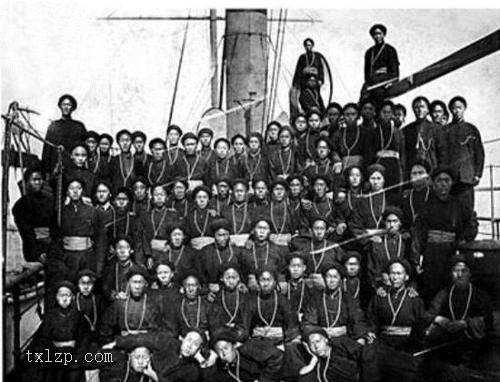Period:Tang dynasty Production date:7thC-12thC
Materials:jade
Technique:polished
Subjects:dragon
Dimensions:Height: 3.50 centimetres Length: 10.10 centimetres
Description:
Semi-translucent white jade with areas of white calcification of a sprinting dragon in the round running on stylized clouds with its outstretched front right paw clutching a pearl.
IMG
![图片[1]-figure BM-2022-3034.210-China Archive](https://chinaarchive.net/Tang dynasty/Jades/690_.jpg)
Comments:The dragon with open jaws exposing teeth and with slightly protruding eyes in a posture demonstrating swift movement with swirling mane and flowing tufts of fur at the limb joints and treading on bi-furcated clouds. At the base of the central group of clouds is a small round perforation for attachment purposes. Tang/Liao Dynasties. See Rawson 1995, p.330, cat.no.25.3 Tang or Liao, 8th-10th century. A long sinuous pacing dragon with a boldly striated mane strides over a band of curled and folded clouds, many of them tri-lobed, that form the lower edge of this openwork ornament. The uplifted head of the dragon grasps at a tendril clasped in his raised paw. Other tendrils are entwined in among the clouds. Both sides of the plaque are worked and polished, which suggest that it was intended to be seen from both sides. Openwork ornaments are characteristic of the Tang and post Tang tradition of jade ornaments. Indeed this piece, like the earrings in the shape of deities among clouds probably took its openwork form from examples in gold or silver. An almost identical dragon without the clouds is illustrated in the catalogue, Guyujingying. The separate lobing of the individual clouds is probably earlier in date than the continuous roll that supports flying deities ilike 656 [2014,AsiaLoan,1.79]. As with several ornaments the pure white jade suggests the dragon comes from the homes of the immortals. In Tang poetry and literature dragons are the mounts and steeds of the immortals. Ornaments of dragons in fine white jade as here were probably in intended to recall such creatures and bring their owners good fortune.
Materials:jade
Technique:polished
Subjects:dragon
Dimensions:Height: 3.50 centimetres Length: 10.10 centimetres
Description:
Semi-translucent white jade with areas of white calcification of a sprinting dragon in the round running on stylized clouds with its outstretched front right paw clutching a pearl.
IMG
![图片[1]-figure BM-2022-3034.210-China Archive](https://chinaarchive.net/Tang dynasty/Jades/690_.jpg)
Comments:The dragon with open jaws exposing teeth and with slightly protruding eyes in a posture demonstrating swift movement with swirling mane and flowing tufts of fur at the limb joints and treading on bi-furcated clouds. At the base of the central group of clouds is a small round perforation for attachment purposes. Tang/Liao Dynasties. See Rawson 1995, p.330, cat.no.25.3 Tang or Liao, 8th-10th century. A long sinuous pacing dragon with a boldly striated mane strides over a band of curled and folded clouds, many of them tri-lobed, that form the lower edge of this openwork ornament. The uplifted head of the dragon grasps at a tendril clasped in his raised paw. Other tendrils are entwined in among the clouds. Both sides of the plaque are worked and polished, which suggest that it was intended to be seen from both sides. Openwork ornaments are characteristic of the Tang and post Tang tradition of jade ornaments. Indeed this piece, like the earrings in the shape of deities among clouds probably took its openwork form from examples in gold or silver. An almost identical dragon without the clouds is illustrated in the catalogue, Guyujingying. The separate lobing of the individual clouds is probably earlier in date than the continuous roll that supports flying deities ilike 656 [2014,AsiaLoan,1.79]. As with several ornaments the pure white jade suggests the dragon comes from the homes of the immortals. In Tang poetry and literature dragons are the mounts and steeds of the immortals. Ornaments of dragons in fine white jade as here were probably in intended to recall such creatures and bring their owners good fortune.
© Copyright
The copyright of the article belongs to the author, please keep the original link for reprinting.
THE END



![[Qing Dynasty] British female painter—Elizabeth Keith, using woodblock prints to record China from the late Qing Dynasty to the early Republic of China—1915-China Archive](https://chinaarchive.net/wp-content/uploads/2022/11/image-191x300.png)

